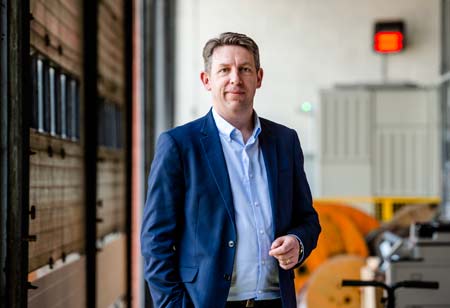As the UK’s data centre market continues to mature, forecasters are predicting 36 percent revenue growth and 29 percent power uplift in power demand by the end of 2025. With each data centre placing high energy demand on the local electricity network, there’s accelerating pressure and complexity in making sure they are powered sustainably.
To do this, developers first need to find a location where they can ensure there is sufficient energy from green sources. In the UK, the majority of data centres are located in the south-east of England. This can be for a variety of reasons, namely that there has historically been easier access to high-voltage energy infrastructure from the existing energy network and that available capacity can support the day-to-day running requirements and other energy-intensive requirements like air-conditioning and cooling. Other important factors include having enough physical space and nearby connectivity to data networks and other utilities.
We have been working with our clients for many years as an Independent Connection Provider to design and build these networks. As the organisations we work with continue their drive to lower emissions, finding the correct location for a new data centre has never been more critical. It’s vital to ensure that they can run operations efficiently, sustainably, and with integrated green generation.
On-site green energy not only helps boost sustainability credentials and makes the proposition more attractive to potential clients, but also reduces the impact of rising energy costs. On-site renewable generation opportunities should be optimised to access the large footprint that data centres occupy on a well-chosen site. These large areas may make solar PV viable–whether on the roof of buildings or on the surrounding land. Some sites may even have space for wind generation.
"On-site green energy not only helps boost sustainability credentials and makes the proposition more attractive to potential clients, but also reduces the impact of rising energy costs."
Other opportunities are emerging as technology advances, such as providing electric vehicle charging on site for staff and visitors or integrating battery storage into the local network. Battery storage could be used as an alternative to diesel backup generation. As technology develops, it may play a bigger part in managing the ever-increasing demand of the data centre while ensuring resilience of supply. This is where the concept of creating a microgrid can be beneficial.
A microgrid is a local energy system that incorporates three key components: generation, storage, and energy demand, all within a bounded and controlled network. When coupled with low carbon generation, a microgrid can demonstrate an efficient and cost-effective way to integrate renewable energy resources into daily operations, turning the challenges of meeting your sustainability targets into cost savings and revenue generating opportunities. For example, a solar photovoltaic installation coupled with battery storage can support a data centre’s energy requirements while exporting excess energy to the grid at peak times to generate additional revenues.
At UK Power Networks Services, we are aware that this requires detailed knowledge and experience of the market, the equipment, the design and build process, and nascent supply chain issues. In some instances, due to global supply, equipment like 132kV switchboards and transformers can take anywhere between 12 to 18 months to purchase, once a detailed design is agreed. The challenge for new data centres, then, is to understand exactly what equipment will be needed, and when, to fulfil the capacity and sustainability requirements of the site, and navigating the supply chain to meet the project’s timeline. We have extensive experience of the industry operations as a trusted partner for high-profile and well established clients.
As the market for new data centres grows, it’s vital that the industry does so as sustainably as possible. While it’s a complex challenge, with the right knowledge, expertise, and determination, the industry can expand while building a brighter energy future.












